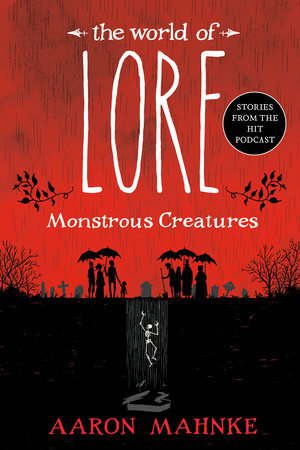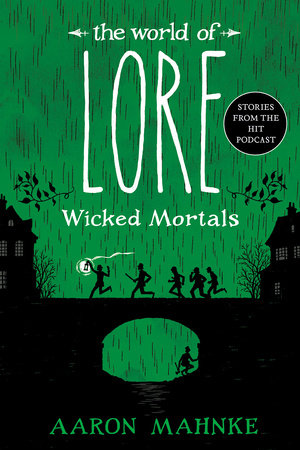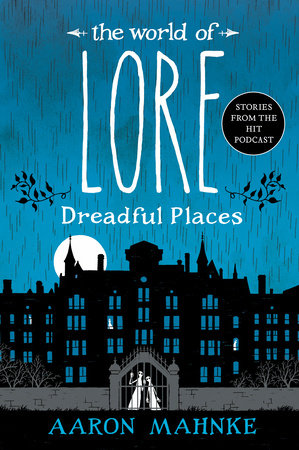Excerpt
The World of Lore: Monstrous Creatures
They Made a TonicHollywood is obsessed.
Sure, we often think of obsessions like sex, violence, gigantic robots, and of course epic battles between good and evil. But another obsession of Hollywood is vampires.
You have to admit, though, that there’s a lot to love about vampires. Immortality, wealth, power, and superhuman abilities such as flight and strength. Yes, they come with trade-offs, such as incredibly bad sunburns, but every movie I’ve seen (and I’ve seen a lot, believe me) tends to show vampires that are fairly happy with their lot in life.
My exposure to the world of vampires happened in the late 1990s when I was in college. A friend recommended the Anne Rice novel Interview with the Vampire. I devoured that and many of the sequels. They’re fun reads, and they certainly set the tone for a decade or more of vampire-centered entertainment.
I won’t touch on the vampires of the Twilight series, mostly because I haven’t read any of the books. But I will say this: those books, however lambasted they have been by critics, have shown that popular culture’s love of all things vampire is as undying as the creatures themselves.
Vampires in History
When most people think of vampires, they envision something that is a purely European creature: a foreign accent, Victorian-era dress, and dark manor homes and castles. It’s a common visual language for most of the Western world, so I don’t blame movies and books for portraying that image. But it’s one small facet of a legend that has hundreds of expressions.
The single most prominent historical figure attached to the modern notion of vampirism is, of course, Vlad III of Wallachia, otherwise known as Vlad the Impaler. Vlad ruled the small Eastern European kingdom of Wallachia from 1456 to 1462.
He was known as Vlad the Impaler because he preferred to execute his enemies by impaling them on stakes. The Ottomans called him Lord Impaler after entering his kingdom and finding “forests” of impaled victims. Vlad was a violent guy, you see. Rather bloodthirsty, you might say.
He, like his father before him, belonged to something known as the Order of the Dragon, a group established to protect Christian Europe from the invading Ottoman Empire. Vlad’s father, Vlad II, was known as Vlad Dracul, or “Vlad the Dragon.” When Vlad III rose to power, he took the hereditary title and was known as Vlad Draculea, “son of the dragon.”
That name might sound very similar to the most famous vampire story in the world, and that’s because Bram Stoker, when creating his famous creature of the night, used Vlad III as his inspiration. Well, part of it, but we’ll get into that more later.
The roots of most vampire stories, however, can be traced back to superstitions founded in ancient cultures all across the world. Western Europe played host to countless stories of reanimated dead known as revenants. These were animated corpses that climbed out of the grave to torment the living. The word “revenant” comes from the Latin that means “to come back.”
Come back to do what? you might ask. Well, I’m glad you did. At first, it was just to terrorize the living, but as the centuries passed, the legend became more specific. Revenants were said to return from the grave to torment their living relatives and neighbors. What was key, though, was that revenants were specific people, not anonymous zombies like the ones from our modern horror genre. These things had a past and a purpose.
In Norse mythology we can find tales of creatures known as draugr, “again-walkers,” who would return from the grave and wreak havoc on the living. These creatures possessed superhuman strength, smelled of decay, and were pretty ugly in appearance. They could enter the dreams of the living, and they were said to leave a tangible object near the sleeping person so that, upon waking, their victims would know their dreams were more real than they feared.
Let’s go back earlier than the Middle Ages, though. The legends of some ancient cultures spoke of creatures that, while not immediately similar to the vampires we know today, nonetheless shared many core characteristics.
First, we have the Greek myth of Empusa, who was a daughter of Hecate. Empusa was said to lure young men at night and then feast on their blood before moving on to the main course—their flesh. Another Greek tale involves Lamia, a mistress of Zeus who becomes cursed by Zeus’s wife, Hera, and doomed to hunt children, devouring them.
Stories of undead creatures, or creatures that feed on the blood of the living, seem nearly as common as written language itself. On Madagascar, an island nation off the east coast of Africa, there are legends of a creature known as the ramanga, which was known to attack nobles, drinking their blood and eating their nail clippings.
Yeah, their nail clippings. Deal with it.
Vampires in Medical Science
Are vampires real? I’ll let you make the final decision on that, but what is clear is that most of these stories find their genesis in the human need to explain the unexplainable. For instance, early Europeans used the myth as a way of explaining why a corpse wasn’t decomposing at the normal, expected rate. You can see evidence of this in Bulgaria, where graves dating back more than eight hundred years have been opened, revealing iron rods through the chest of skeletons.
And in a time when it was not unheard of to bury someone who was thought to be dead, only to find out that they really weren’t, you can imagine that stories would quickly circulate that the dead were coming back to life. As a result, taphophobia, the fear of being buried alive, swept Europe and the United States. Of course, once medical science caught up, people got more practical by building alert systems into graves, just in case the person woke up and wanted out.
I realize that being buried alive sounds like a rare occurrence, but it happened frequently enough that many people were sufficiently paranoid about it to actually spend time looking for a solution. One of those people happened to be a medical doctor, a man named Adolf Gutsmuth. In 1822, and driven by the fear of being buried alive, he invented a “safety coffin” for his own interment. And he tested it out himself.
Tested it out? You bet. Dr. Gutsmuth allowed himself to be buried underground in his new “safety coffin” for several hours, during which he had meals delivered to him through a feeding tube. He enjoyed a wonderful meal of soup, sausages, and a local beer.
Sounds like a great date-night destination.
Dr. Timothy Smith of New Haven, Vermont, was another paranoid inventor. He created a grave that can be visited to this day if you happen to be passing by Evergreen Cemetery. It was a crypt buried in the usual manner, but it had a cement tube positioned over the face of the body. A glass plate was affixed to the top of the tube, at ground level.
Dr. Smith died a real, natural death, and was buried in his fancy “coffin with a view.” He never woke up, but early visitors to his grave reported that they had a clear view of his decomposing head until condensation obscured the glass.
Side note: Vampires no longer scare me. Waking up inside a small box buried six feet below the surface of the earth is what true fright looks like to me.
Another culprit in humanity’s use of the vampire label was porphyria, a rare blood disorder, but modern science has pretty much closed the case on that one, saying that it’s too far of a stretch to connect the two topics. Rabies, of all conditions, has also been used as an explanation for the rise of vampire mythology. Surprisingly, there are a lot of commonalities between victims of rabies and vampires, such as sensitivity to light and garlic, as well as altered sleep patterns.
The most recent medical condition with a strong connection to vampire mythology was actually tuberculosis. Those who suffer from TB had no vampire-like symptoms, though, and that makes this connection harder to explain. It’s also, incidentally, where one of my favorite New England legends comes into the picture.






